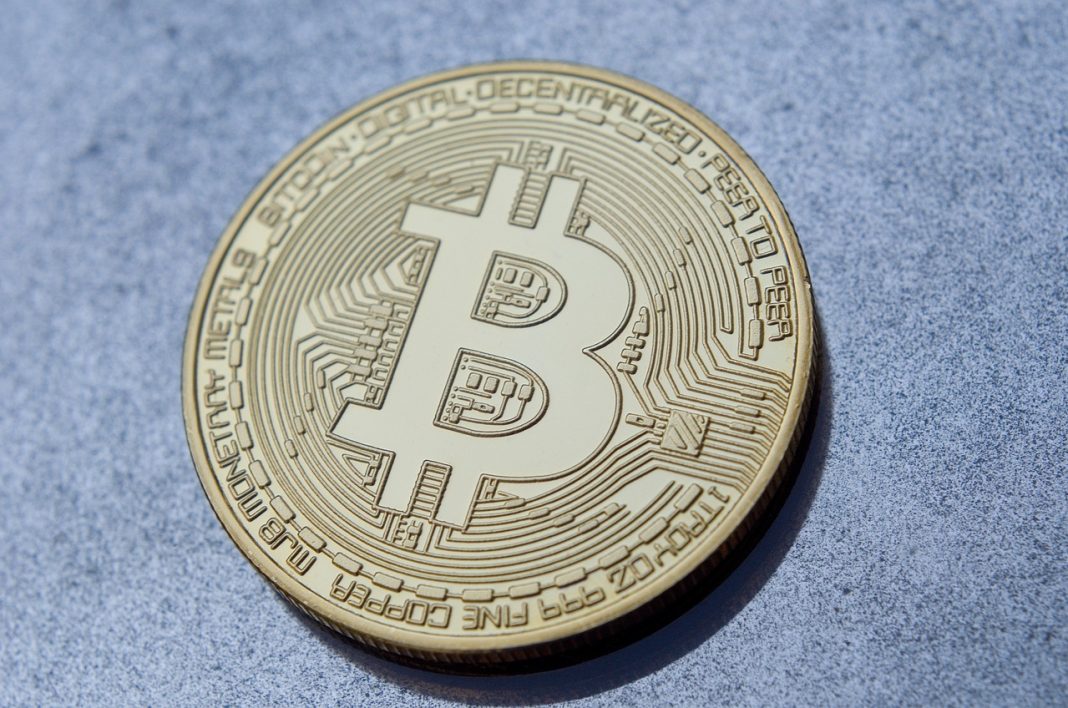Welcome to our journey through the intertwining worlds of Bitcoin and sustainability. As we unpack the significance of eco-friendly practices in the realm of cryptocurrencies, it’s crucial to grasp the essence of Bitcoin and the environmental concerns it raises. The pursuit of sustainability within the Bitcoin space is not only an environmental imperative but also a reflection of the evolving values of the cryptocurrency community.
Brief Explanation of Bitcoin and Its Environmental Impact
Bitcoin, the first decentralized digital currency, has transformed the financial landscape since its inception in 2009. It operates on a technology called blockchain, a secure and transparent ledger system. While Bitcoin has been praised for its innovation and potential for financial inclusion, it comes with an environmental price tag. Mining, the process used to create new bitcoins and verify transactions, consumes vast amounts of energy. This energy consumption is due to the proof-of-work mechanism that requires miners to solve complex mathematical puzzles – a task that demands high-powered computer rigs running around the clock.
Importance of Promoting Sustainable Practices in the Bitcoin Space
The ecological footprint of Bitcoin mining has sparked a global conversation about the need for sustainable practices in the crypto space. With climate change at the forefront of global issues, reducing the carbon emissions associated with Bitcoin mining is paramount. Promoting sustainability is not just about protecting our planet; it’s also about ensuring the longevity and social acceptance of Bitcoin as a viable financial ecosystem. As such, the industry is increasingly looking for ways to mitigate its impact on the environment, balancing innovation with responsibility.
Overview of the Increasing Focus on Sustainability Within the Cryptocurrency Community
The cryptocurrency community is becoming ever more conscientious about its role in environmental stewardship. This shift towards sustainability is evident in the growing number of initiatives aimed at reducing the carbon footprint of crypto operations, from using renewable energy sources to developing more energy-efficient consensus mechanisms like proof-of-stake. As awareness spreads, there’s a collective effort to reconcile the revolutionary potential of cryptocurrencies with the urgent need for sustainable development.
Current Environmental Challenges in Bitcoin Mining
Have you ever wondered what powers the Bitcoin network? Let’s dive into the energy-intensive nature of Bitcoin mining. In essence, Bitcoin operates on a decentralized ledger system known as blockchain, which requires immense computational power to validate transactions and maintain security. This process, called mining, involves solving complex cryptographic puzzles. Unfortunately, it consumes a significant amount of electricity, often sourced from fossil fuels.

Energy-Intensive Nature of Bitcoin Mining
The energy consumption of Bitcoin mining is staggering. To put things into perspective, the Bitcoin network’s annual energy usage rivals that of entire countries. According to the Cambridge Bitcoin Electricity Consumption Index, Bitcoin mining consumes more than 100 terawatt-hours of electricity annually, an amount comparable to the power usage of the Netherlands. Miners need powerful equipment, which runs round-the-clock, leading to this substantial energy requirement.
Carbon Footprint of Bitcoin Mining Operations
But what does this mean for our planet? The carbon footprint of these operations is equally alarming. When coal or other fossil fuels generate the majority of this energy, the emissions contribute significantly to greenhouse gases. A study published in the journal “Joule” suggests that Bitcoin mining emits between 22 and 22.9 million metric tons of carbon dioxide annually. These figures illustrate the urgent need to address the environmental impact of this digital currency.
Statistical Data on the Environmental Impact of Bitcoin Mining
Let’s look at some numbers to grasp the full extent of the issue. The energy efficiency of mining hardware is improving, but the overall power demand remains high due to the increasing difficulty of mining as more miners join the network. Reports indicate that each Bitcoin transaction could be responsible for hundreds of kilograms of carbon dioxide, depending on the energy sources used for mining. While these statistics can vary, they shed light on the potential environmental cost embedded in every Bitcoin transaction.
As we reflect on the data and discussion above, it’s clear that while Bitcoin offers innovative financial solutions, it also poses environmental challenges that need to be acknowledged and addressed. The next sections will explore how the cryptocurrency community is responding to these challenges with sustainable initiatives, the impact of these practices, and what the future holds for Bitcoin’s ecological footprint.
Prominent Sustainable Initiatives in the Bitcoin Space
Having established the significant energy demands and subsequent environmental impact of Bitcoin mining, it’s imperative to turn our attention to the brighter side. What’s being done to mitigate these effects? In this section, we’ll delve into the pioneering projects and key players that are steering the Bitcoin space toward a more sustainable future.
Profile of Leading Projects and Initiatives Focused on Sustainability in Bitcoin
The march towards sustainability within the realm of Bitcoin is led by a variety of innovative projects. One standout initiative is the Bitcoin Mining Council, which promotes energy transparency and sustainable mining practices. Another is the Crypto Climate Accord, inspired by the Paris Climate Agreement, aiming to decarbonize the cryptocurrency industry by 2040. Additionally, organizations like the Blockchain for Climate Foundation are harnessing blockchain technology to create tools that help fulfill the terms of the Paris Agreement.
Examination of Key Players in Promoting Eco-Friendly Practices
Key players in this green transition include both new startups and well-established companies. For instance, Blockstream has partnered with Square to construct a solar-powered Bitcoin mining facility, demonstrating a scalable model for renewable mining operations. Figures like Elon Musk and Jack Dorsey also play pivotal roles, using their influence to advocate for cleaner energy usage in crypto mining.
Examples of Innovative Technologies and Approaches to Reduce Environmental Impact
Innovation is at the heart of the shift towards greener Bitcoin mining. Examples abound: Hydro-powered mining farms make use of the natural flow of water to generate electricity, while some enterprises look to geothermal energy from Earth’s core as a solution. Furthermore, stranded gas—gas flared as a byproduct of oil extraction—is being repurposed by companies like Upstream Data to power mining operations, turning waste into a valuable resource.
Progressive approaches also include the development of more energy-efficient hardware, such as next-generation ASIC miners that offer greater hashing power with lower power consumption. The promotion of Proof of Stake (PoS) and other less energy-intensive consensus mechanisms, although not directly applicable to Bitcoin, influences the broader dialogue about energy consumption in blockchain technologies and encourages innovation in the space.
Evaluating the Impact of Sustainable Practices in Bitcoin
As we pivot from showcasing prominent sustainable initiatives in the Bitcoin space, it’s crucial to delve into the actual impact of such practices. How significant is the shift towards sustainability, and what ripple effects does it have on our environment and society? Let’s unpack these questions.
Potential Environmental Benefits of Sustainable Initiatives
The environmental impact of Bitcoin mining can’t be overstated; it’s a process that traditionally consumes an enormous amount of electricity. However, integrating sustainable practices such as using renewable energy sources—like solar, wind, or hydroelectric power—can lead to a drastic reduction in carbon emissions. This shift not only lessens the strain on our planet’s resources but also paves the way for a cleaner future in financial operations. The notion that digital currency could eventually have a minimal carbon footprint is no longer a distant dream but a tangible goal with concerted effort and innovative thinking.
Economic and Social Considerations
When discussing sustainability, it’s not just about the environment. Adopting eco-friendly practices in Bitcoin mining can have profound economic benefits as well. For starters, renewable energy can often be cheaper in the long run, cutting costs for miners and potentially stabilizing market prices. Socially, the move towards sustainability can enhance the reputation of Bitcoin, attracting socially conscious investors and users who prioritize ethical considerations in their financial dealings.
Moreover, the promotion of sustainable practices can lead to job creation in the green tech sector, fostering community development and new educational programs. It’s a holistic approach that has the potential to stimulate not just a segment of the economy but to catalyze positive change across various societal layers.
Traditional vs. Sustainable Bitcoin Mining Practices
Comparing traditional mining practices to sustainable ones offers a stark contrast in terms of environmental impact. Traditional Bitcoin mining relies heavily on fossil fuels, especially in regions where coal is still a major energy source. This practice contributes significantly to greenhouse gas emissions and has been a point of intense scrutiny and criticism.
In contrast, sustainable Bitcoin mining leverages renewables, which are inherently less harmful to the environment. Moreover, advancements in technology are continually improving energy efficiency. For instance, new ASIC miners are being developed to provide more hashing power while using less electricity. Coupled with sustainable energy, this presents a compelling case for a greener future in Bitcoin mining.
Another innovative approach is the utilization of excess energy, such as flared natural gas, which would otherwise go to waste. This not only helps in reducing the environmental footprint but also turns a byproduct into a productive asset. The comparison is clear: sustainable practices offer a pathway to a more responsible and potentially more profitable mining ecosystem.
Implementing Sustainable Practices: Challenges and Opportunities
The journey to a greener Bitcoin is fraught with challenges, yet it’s paved with opportunities for innovation and progress. Let’s unpack the intricacies of this endeavor.
Obstacles Facing Sustainable Initiatives
For starters, the sustainable transformation of Bitcoin mining isn’t without its hurdles. High upfront costs for renewable energy infrastructure can be daunting for miners who are accustomed to traditional methods. There’s also a technological gap; not all regions have equal access to clean energy technologies, and integrating these into existing systems requires both time and expertise.
Moreover, the regulatory landscape is as unsettled as a windy day. Policymakers are still grappling with how to govern the cryptocurrency space, let alone how to incentivize eco-friendly practices within it. Without clear guidelines or benefits for going green, miners may hesitate to make the switch.
Untapped Potential for Sustainable Growth
Despite these barriers, there’s a silver lining. The Bitcoin community is nothing if not innovative, and the push for sustainability is driving new technological advances. For instance, the use of excess energy from other industries to power mining operations is a prime example of creative problem-solving that benefits both the planet and profit margins.
Additionally, there’s growing interest from investors in supporting environmentally conscious initiatives. This burgeoning financial incentive could spur further development of sustainable mining operations. As renewable energy becomes more cost-effective and widespread, the opportunity for its integration in Bitcoin mining increases exponentially.
Strategies to Nurture a Greener Bitcoin Ecosystem
So, how do we navigate these waters and set sail toward a sustainable future for Bitcoin? Education and collaboration are key. By raising awareness about the importance of sustainability, we can build a community that prioritizes eco-friendly choices. Engaging with policymakers to develop incentives for renewable energy use in mining could also catalyze change.
Investing in research and development is crucial as well. Innovations like energy-efficient mining hardware and blockchain-based energy trading platforms could revolutionize the way Bitcoin interacts with the environment. Finally, fostering partnerships between mining companies and renewable energy providers could streamline the transition to green practices.
Conclusion and Call-to-Action
As we wrap up our exploration of sustainability in the Bitcoin space, it’s crucial to underscore the significance of green practices. The digital currency, revolutionary as it is, comes with an environmental price tag. But the narrative is changing. Sustainable initiatives are not just a nod to environmentalism; they are a necessary pivot for the long-term viability of Bitcoin.
Bitcoin has often been criticized for its energy consumption, but we’ve seen that change is possible. We’ve witnessed pioneering projects integrate renewable energy and innovative mining methods to reduce Bitcoin’s carbon footprint. These efforts are commendable, yet their success hinges on widespread support. This is where you, the reader, come into play.

Supporting sustainability in the Bitcoin arena is not merely about advocacy; it’s an investment in the future of finance and technology. By engaging with and backing sustainable initiatives, we can drive the industry towards a more eco-friendly standard. Be it through choosing sustainably-minded crypto platforms or simply spreading awareness, your actions make a difference.
Looking ahead, the trajectory for sustainability within the cryptocurrency community is promising. With increased attention from investors, developers, and users towards green alternatives, the sector is poised to evolve. Anticipate further advancements in energy-efficient technologies and novel approaches that could revolutionize Bitcoin mining and its impact on the planet.
In conclusion, the journey toward a sustainable Bitcoin ecosystem is ongoing. Every stakeholder, from miners to investors, has a role to play. Embracing eco-friendly practices today will not only mitigate environmental concerns but also ensure that the Bitcoin space thrives for generations to come. Let’s continue to champion these green initiatives and foster a digital currency realm that aligns with our values for asustainable future. Together, we can make a difference and create a greener, more responsible Bitcoin community.
Here are some actionable steps you can take:
1. Educate Yourself: Learn about the environmental impact of Bitcoin mining and the importance of sustainable practices. Stay informed about new developments in energy-efficient technologies and renewable energy sources.
2. Choose Green Crypto Platforms: Support cryptocurrency exchanges and platforms that prioritize sustainability. Look for those that use renewable energy sources or offset their carbon emissions.
3. Advocate for Change: Engage with policymakers and industry leaders to promote incentives for renewable energy use in mining. Encourage the adoption of energy-efficient hardware and innovative solutions like blockchain-based energy trading platforms.
4. Invest in Sustainable Projects: Consider investing in sustainable Bitcoin projects that prioritize eco-friendly practices. This can help drive the industry towards a more sustainable future.
5. Spread Awareness: Share your knowledge and raise awareness about the importance of sustainability in the Bitcoin space. Encourage others to make environmentally conscious choices when it comes to cryptocurrencies.
6. Support Partnerships: Foster collaborations between mining companies and renewable energy providers. By working together, they can streamline the transition to green mining practices.
By taking these actions, we can contribute to a more sustainable and environmentally responsible Bitcoin ecosystem. Let’s be proactive in driving change and ensuring a greener future for digital currencies.


